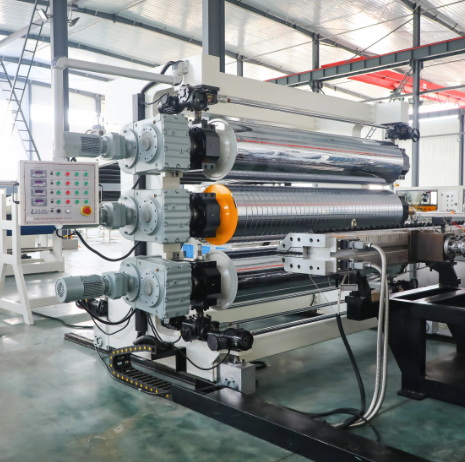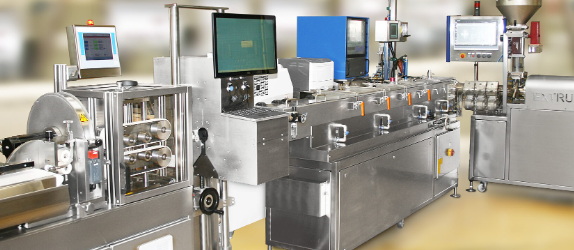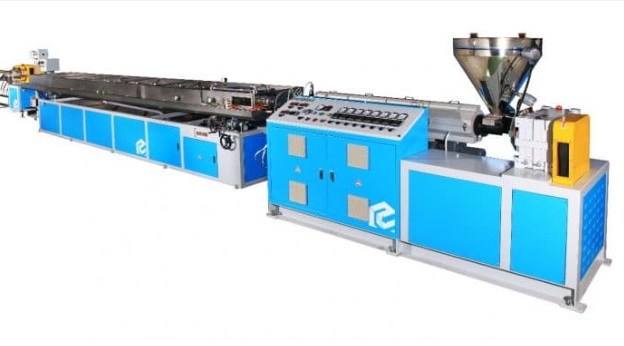Content Menu
● Introduction to Compounding Extrusion Machinery
>> Types of Compounding Extrusion Machinery
● Applications Across Industries
>> Automotive Industry
>> Packaging Industry
>> Electronics Sector
>> Construction Industry
>> Consumer Goods
● Advantages of Compounding Extrusion Machinery
● Challenges and Future Developments
● Market Trends and Growth
● Environmental Impact and Sustainability
● Technological Innovations
● Conclusion
● FAQ
>> 1. What is compounding extrusion machinery used for?
>> 2. What types of industries benefit from compounding extrusion machinery?
>> 3. What are the advantages of using twin-screw extruders in compounding?
>> 4. How does compounding extrusion machinery contribute to sustainability?
>> 5. What are the future developments expected in compounding extrusion machinery?
● Citations:
Compounding extrusion machinery plays a pivotal role in enhancing the properties of polymers, making them suitable for a wide range of applications across various industries. This process involves mixing and melting raw materials, such as polymers, additives, and fillers, to create customized compounds with specific properties. The versatility of compounding extrusion machinery allows it to be used in sectors such as automotive, packaging, electronics, construction, and consumer goods, among others.

Introduction to Compounding Extrusion Machinery
Compounding extrusion machinery, particularly twin-screw extruders, is widely used for its ability to efficiently mix and compound materials. These machines are capable of performing complex tasks such as blending polymers, adding fillers, and modifying materials through reactive extrusion. The process begins with feeding raw materials into the extruder, where they are heated and mixed until they form a homogeneous molten plastic. This molten material is then cooled and pelletized for further processing into finished products.
Types of Compounding Extrusion Machinery
1. Twin-Screw Extruders: These are the most common type of compounding extruders. They come in co-rotating and counter-rotating designs, each suited for different applications. Twin-screw extruders are ideal for high-shear mixing and are used in demanding applications such as reactive compounding and the production of specialty materials. Co-rotating twin-screw extruders provide superior distributive and dispersive mixing, making them highly efficient for plastic compounding[1][8].
2. Single-Screw Extruders: These are simpler and less expensive than twin-screw extruders. They are primarily used for less complex compounding tasks and are more suited for pumping uniformity rather than high-shear mixing.
3. Co-Kneader Extruders: These are specialized for high-shear compounding and are used in applications requiring excellent dispersion and uniformity, such as reactive compounding.
Applications Across Industries
Automotive Industry
In the automotive sector, compounding extrusion machinery is used to produce lightweight and durable components. Compounded plastics are utilized for manufacturing parts such as bumpers, dashboards, and interior trims, which require high strength and resistance to impact and temperature variations. The use of advanced materials like carbon fiber reinforced polymers (CFRP) is also becoming more prevalent, further enhancing vehicle performance and efficiency.
Packaging Industry
The packaging industry benefits significantly from plastic compounding, as it allows for the creation of materials with excellent barrier properties, flexibility, and durability. Compounded plastics are used in both flexible and rigid packaging solutions, ensuring product safety and freshness. For instance, packaging materials with enhanced moisture barrier properties are crucial for food packaging, extending shelf life and maintaining product quality.
Electronics Sector
In the electronics sector, plastic compounding is essential for producing materials that offer electrical insulation, flame retardancy, and thermal stability. These properties are crucial for components used in devices such as smartphones, computers, and household appliances. The integration of advanced materials like nanomaterials and conductive polymers further enhances the performance and safety of electronic devices.
Construction Industry
Compounded plastics are widely used in the construction industry for applications such as pipes, profiles, and insulation materials. These materials provide resistance to corrosion, moisture, and UV radiation, making them ideal for both indoor and outdoor use. The growing demand for sustainable building materials also drives the use of recycled plastics in construction, contributing to environmental sustainability.
Consumer Goods
Plastic compounding enables the production of a wide range of consumer products, from household items to toys. The ability to customize colors, textures, and mechanical properties allows manufacturers to meet diverse consumer preferences and requirements. For example, compounded plastics are used in outdoor furniture, offering durability and resistance to weather conditions.

Advantages of Compounding Extrusion Machinery
1. Customization: Compounding extrusion machinery allows for the customization of material properties to meet specific application requirements.
2. Efficiency: These machines can handle high-shear mixing, making them efficient for complex compounding tasks.
3. Versatility: They are suitable for a wide range of applications across different industries.
4. Quality Control: Real-time monitoring and quality control ensure that the compounded materials meet desired specifications and industry standards.
5. Sustainability: Compounding extrusion machinery can contribute to sustainability by enabling the production of materials with improved properties, reducing waste, and potentially using recycled materials.
Challenges and Future Developments
Despite the advantages, compounding extrusion machinery faces challenges such as energy efficiency, environmental sustainability, and the need for advanced automation technologies. Future developments are expected to focus on improving these aspects while expanding the range of applications. For instance, advancements in twin-screw extruder technology are aimed at enhancing energy efficiency and reducing operational costs[4][5].
The integration of Industry 4.0 technologies, such as smart sensors and AI-driven process control, will further optimize production processes, ensuring higher productivity and consistency in material quality. Additionally, the increasing focus on recycling and reusing plastics will drive innovations in compounding machinery capable of handling recycled materials effectively.
Market Trends and Growth
The global market for plastic compounding machinery is experiencing significant growth driven by increasing demand from industries such as packaging, construction, and automotive. The trend towards modular designs and flexible production lines is becoming more prevalent, allowing manufacturers to adapt quickly to changing market demands[2][3]. Moreover, substantial investments in the plastics industry are expected to fuel further growth in the coming years.
Environmental Impact and Sustainability
As environmental concerns grow, the plastic compounding industry is shifting towards more sustainable practices. This includes the use of recycled materials, bioplastics, and energy-efficient machinery. Companies are investing in technologies that enable the recycling of plastic waste, reducing landfill waste and conserving natural resources. For example, Bausano's twin-screw extrusion lines are used for PVC regranulation, allowing manufacturers to reintroduce recycled PVC into their production processes[6].
Technological Innovations
Recent technological advancements in compounding extrusion machinery include the development of more efficient heating systems, such as Bausano's Smart Energy System, which reduces energy consumption and enhances production efficiency[5]. Additionally, innovations in screw design and control systems have improved the performance and longevity of extruders, making them more reliable and cost-effective.
Conclusion
Compounding extrusion machinery is a crucial component in the production of customized plastic materials for various industries. Its versatility and efficiency make it an essential tool for enhancing material properties to meet specific application requirements. As industries continue to evolve, the demand for advanced compounding extrusion machinery is expected to grow, driving innovation and sustainability in plastic production.

FAQ
1. What is compounding extrusion machinery used for?
Compounding extrusion machinery is used to mix and melt raw materials, such as polymers, additives, and fillers, to create customized compounds with specific properties.
2. What types of industries benefit from compounding extrusion machinery?
Industries such as automotive, packaging, electronics, construction, and consumer goods benefit significantly from compounding extrusion machinery.
3. What are the advantages of using twin-screw extruders in compounding?
Twin-screw extruders offer high-shear mixing capabilities, making them ideal for complex compounding tasks and reactive extrusion.
4. How does compounding extrusion machinery contribute to sustainability?
Compounding extrusion machinery can contribute to sustainability by enabling the production of materials with improved properties, reducing waste, and potentially using recycled materials.
5. What are the future developments expected in compounding extrusion machinery?
Future developments are expected to focus on improving energy efficiency, environmental sustainability, and integrating advanced automation technologies.
Citations:
[1] https://jieyatwinscrew.com/blog/advanced-plastic-compounding-machines-and-extruders-leading-technology-supplier/
[2] https://www.jwellextrusions.com/the-market-of-plastic-compounding-machine.html
[3] https://www.fortunebusinessinsights.com/extruders-and-compounding-machine-market-110015
[4] https://steerworld.com/polymers-and-plastics/applications/compounding
[5] https://www.mordorintelligence.com/industry-reports/plastic-compounding-machinery-market
[6] https://www.plastikmedia.co.uk/uk-case-study-pvc-regranulation-compounding/
[7] https://www.puconsulting.se/wp-content/uploads/2019/05/1-Corporate.pdf
[8] https://www.ptonline.com/topics/compounding
[9] https://www.dana-industrial.com/case-history/sac-japan-extrusion-machine-for-plastic-and-chemical-compounding/
[10] https://www.thermofisher.com/in/en/home/industrial/manufacturing-processing/extrusion-compounding-equipment/applications.html
[11] https://www.youtube.com/watch?v=sJ8GvXGHFts
[12] https://www.tinsleycompany.com/plastic-compounding-with-an-intermediate-bulk-container-ibc-system/
[13] https://onecpm.com/markets/compounding
[14] https://www.linkedin.com/pulse/plastic-compound-extruder-market-emerging-trends-across-lqtif/
[15] https://engineering.case.edu/research/centers/advanced-polymer-processing/processing
[16] https://www.bausano.com/en/press-and-news/plastic-extrusion-compounding-how-does-it-work
[17] https://www.datainsightsmarket.com/reports/plastic-compounding-machine-57876
[18] https://www.palamaticprocess.com/blog/what-is-the-process-of-plastic-compounding-by-extrusion
[19] https://www.useon.com/compounding/
[20] https://www.futuremarketinsights.com/reports/extruders-and-compounding-machines-market






















